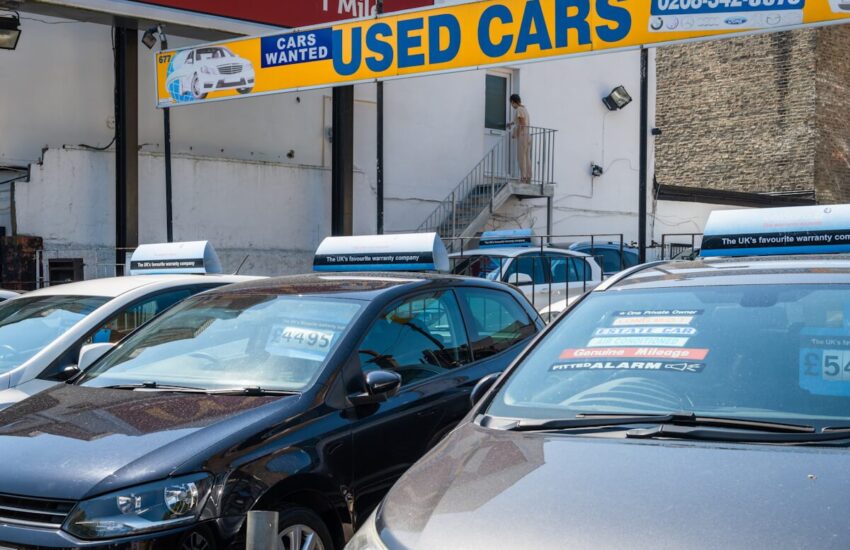In a world driven by sustainability and frugality, buying a used car is an increasingly popular choice. It provides an opportunity to snag a great deal, saving thousands of dollars while still acquiring a reliable vehicle. However, there’s a certain level of risk associated with buying a used car, which can be mitigated by understanding common pitfalls and how to avoid them.
Failing to Do Thorough Research
The first common pitfall in buying a used car is the lack of proper research. One should never underestimate the importance of knowing the current market trends, vehicle price ranges, and common problems associated with specific car models. By understanding the market, you can set realistic expectations and make an informed decision. Utilize trusted online platforms for vehicle reviews and information, and consult Consumer Reports for pricing guidelines.
Skipping the Pre-purchase Inspection
Often, buyers trust their eyes and take the seller’s word when examining a used car, leading to another common mistake – skipping the pre-purchase inspection. Even if the vehicle looks immaculate and the seller seems trustworthy, always insist on a thorough inspection by a certified mechanic. They can spot potential issues that may be invisible to an untrained eye, saving you from unexpected and costly repairs down the line.
Neglecting the Vehicle’s History Report
Every used car has a past, and it’s crucial to know what it entails. By neglecting the vehicle’s history report, buyers risk purchasing a car with hidden issues like undisclosed accidents, odometer tampering, or a salvage title. Services like CARFAX and AutoCheck provide comprehensive reports detailing the vehicle’s history, helping you to make an informed decision.
Buying Based on Monthly Payments Alone
Some buyers focus solely on the monthly payments, overlooking the total purchase price. While a lower monthly payment may seem enticing, it could lead to a longer-term loan with more interest, resulting in a higher total cost. Therefore, always consider the total price, including taxes, fees, and interest, rather than just the monthly payments.
Ignoring the Need for a Test Drive
An attractive price tag or a high-pressure sales pitch may entice you to forgo a test drive. However, this can be a grave error. A test drive allows you to assess how the vehicle runs, check the comfort level, verify the functioning of all features, and identify any unusual sounds or vibrations. It gives you a firsthand feel of the car and can be instrumental in your final decision.
Not Considering Insurance Costs
Before finalizing the purchase, remember to chose the right car insurance. Factors such as the car’s make, model, age, and your driving record can significantly affect the premium. High insurance costs can increase the overall cost of ownership, so always factor these costs into your budget.
Misunderstanding the Financing Options
One of the most critical steps in buying a used car involves comparing car loan options. Misunderstanding or neglecting this aspect can cost you significantly in the long run.
The financing options available to you depend on your credit score, the age and price of the car, and the lender’s policies. You can secure financing through a credit union, a bank, an online lender, or even the dealership itself. However, each comes with its pros and cons.
Banks and credit unions usually offer competitive rates but might have more stringent requirements. Online lenders provide a fast and convenient option, but interest rates can be higher. Dealership financing is often the most accessible, particularly for those with a weaker credit history, but it might not offer the best terms.
It’s always wise to get pre-approved for a loan before you start shopping. Pre-approval gives you a clear understanding of what you can afford, strengthens your negotiating position, and protects you from dealership high-pressure tactics..
Wrapping it Up
There are many benefits to buying a used car. By avoiding these common pitfalls, you can steer clear of regrettable decisions and navigate towards a deal that offers excellent value for your money. Always remember to do your research, conduct a pre-purchase inspection, review the vehicle’s history, consider the total purchase price, take a test drive, factor in insurance costs, and most importantly, get pre-approved before visiting the dealership.
AutoByPayment.com offers accurate estimates of new and used car loan payments based on self-selected credit score, current rebates, down payment, and trade equity or negative equity, without customers having to provide their personal identifying information such as email and phone.

